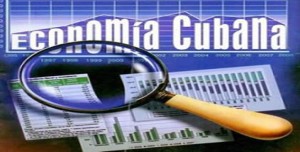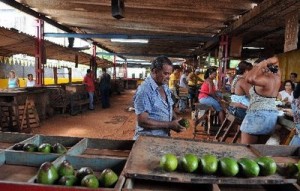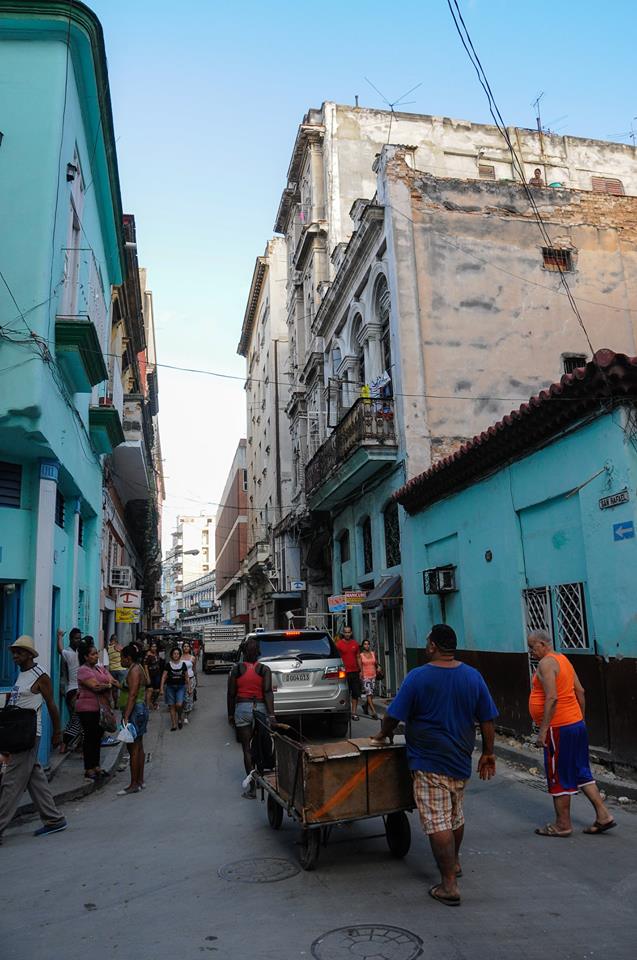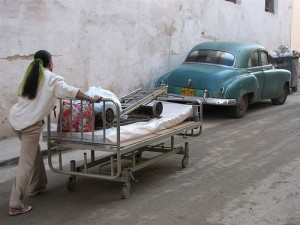THE CUBAN ECONOMY AT THE GATES OF 2016.
2015 is going to Cubans as the year in which relations with the US were restored, but contrary to what many expected, neither that, nor the much heralded economic, even come to the table for the vast majority, although the figures seem show otherwise.
As reported a few days ago the Council of Ministers Minister of Economy and Planning Marino Murillo, Cuba’s gross domestic product (GDP) grew by four percent in 2015, despite the effects of the US blockade and financial constraints. When compared with one percent in 2014, it is substantial progress.
The number of tourists rose to record three and a half million, although US citizens still have travel restrictions to the island. All this, according to experts, despite the strong impact of drought -a 47 percent of the country recorded rainfall-low rates, considered one of the major obstacles to the development of agriculture and the country in general.
The authorities recognize (neophytes) with disappointment forecasts of slower growth (2%) scheduled for 2016, when even this year has seen the improvement that we need.
Bow to Havana.
So, Cuba is facing a 2016 with advantages and disadvantages. Although undoubtedly the defeat of Chavez will have implications for the Cuban economy, it is expected that relations with powers like Russia, China and Brazil, as well as normalization with the United States, cushion the blow.
If we stick with the plan for the economy for the new year, it is aimed at strengthening internal reserves, direct resources towards export products and prioritize investments in infrastructure and strategic sectors. It is planned to continue offering basic social services like health and education similar to the levels of recent years, which means that despite the effort, continue to suffer quite a few shortages in hospitals and schools.
Foreign investment should continue to rise, especially in the Special Zone Development (ZED) Mariel, where more than 400 companies have already expressed interest. Although entrepreneurs from around the world come to Cuba now as a business opportunity-and therefore need to be concreten- paradoxically still remains very difficult to attach to the complex Cuban bureaucratic framework, besides other evils such as dual currency, irrational prices and corruption.
Many agree that the process of “updating the socialist model” is too slow for the needs of the people. This increase in consumption seems to remain few and not reach the millions of Cubans who this December 31 had to re-do magic to get a bountiful table. Very difficult thing when four tomatoes are a workday, half kilo of pork equals more than two days of average wage and still needed two more for a liter cheaper oil, sold by the state.
The Cuban economy to a new stage.
“We can not be satisfied because (results) are not yet reflected positively in daily life,” said Murillo minister.
But that is not enough, nor lash the high prices of agricultural products which provide individuals, when the costs of most staple goods sold state forms are also exorbitant. Cubans will now inventing to squeeze wages and diversify income in an account in which two plus two often not four, not choice but to “resolve”.
2016 is destined to be crucial. Time is running out and the share of confidence in the reforms is bottoming out, while continuing to grow the number of those opting for new horizons, sometimes at any cost. Cuba can not afford to keep waiting growth figures are distributed in all budgets.
Sputnik, Russia / Natasha Vázquez / Excerpts/Internetphotos / TheCubanHistory.
The Cuban History, Hollywood.
Arnoldo Varona, Editor.
LA ECONOMÍA CUBANA A LAS PUERTAS DEL 2016.
Se va 2015 para los cubanos como el año en que se restablecieron las relaciones con EEUU, pero contrariamente a lo que muchos esperaban, ni eso, ni las tan anunciadas transformaciones económicas, llegan aún a la mesa de la inmensa mayoría, aunque las cifras parezcan mostrar otra cosa.
Según informó hace pocos días al Consejo de Ministros el titular de Economía y Planificación, Marino Murillo, el producto Interno Bruto (PIB) cubano creció un cuatro por ciento en 2015, a pesar de los efectos del bloqueo de Estados Unidos y las restricciones financieras. Si se compara con el uno por ciento registrado en el 2014, se trata de un avance sustancial.
Se elevó la cifra de turistas hasta el récord de tres millones y medio, a pesar de que los ciudadanos de Estados Unidos todavía tienen restricciones para viajar a la isla. Todo esto, según los especialistas, a pesar del fuerte impacto de la sequía —un 47 por ciento del territorio nacional registró bajos índices de precipitación-, considerado como uno de los principales frenos al desarrollo de la agricultura y en general del país.
Las autoridades reconocen (Neófitos) con desilusión los pronósticos de menor ritmo de crecimiento (2%) previsto para el 2016, cuando ni siquiera este año se ha notado la mejoría que tanto necesitamos.
Proa a La Habana.
Así, Cuba se enfrenta a un 2016 con ventajas y desventajas. Aunque sin dudas la derrota del chavismo tendrá implicaciones en la economía cubana, se espera que las relaciones con potencias como Rusia, China y Brasil, así como la normalización con Estados Unidos, amortigüen el golpe.
Si nos guiamos por el plan de la economía para el nuevo año, se prevé potenciar las reservas internas, dirigir los recursos hacia los rubros exportables y priorizar las inversiones en infraestructura y sectores estratégicos. Está previsto seguir ofreciendo servicios sociales básicos como salud y educación en niveles similares a los de los últimos años, lo que significa que a pesar del esfuerzo, continuaremos sufriendo no pocas carencias en hospitales y escuelas.
La inversión extranjera debe continuar en ascenso, en particular en la Zona Especial de Desarrollo (ZED) Mariel, donde más de 400 compañías han manifestado ya su interés. Aunque empresarios de todo el mundo ven a Cuba ahora como una oportunidad de negocios —y tanto necesitamos que se concreten-, paradójicamente aún sigue siendo muy difícil insertarse en el complejo entramado burocrático cubano, sin contar otros males como la doble moneda, los precios irracionales y la corrupción.
Muchos coinciden que el proceso de “actualización del modelo socialista” va demasiado lento para las necesidades de la gente. Ese aumento del consumo parece quedarse en unos pocos y no llegar a los millones de cubanos que este 31 de diciembre han tenido que volver a hacer magia para conseguir una mesa bien servida. Cosa harto difícil cuando cuatro tomates son una jornada laboral, medio kilo de carne de cerdo equivale a más de dos días de salario medio y aún se necesitan otros dos para un litro del aceite más barato, vendido por el Estado.
La economía cubana ante un nuevo escenario.
“No podemos estar satisfechos pues (los resultados) aún no se reflejan de manera positiva en la vida cotidiana”, dijo el ministro Murillo.
Pero eso no basta, como tampoco arremeter contra los altos precios de los productos del agro que establecen los particulares, cuando los costes de la mayoría de las mercancías de primera necesidad vendidas de forma estatal son también exorbitantes. Por ahora seguirán los cubanos inventando para exprimir un salario y diversificar ingresos, en una cuenta en la que dos más dos no suelen ser cuatro y no queda otra que “resolver”.
El 2016 está llamado a ser crucial. El tiempo se acaba y la cuota de confianza depositada en las reformas va tocando fondo, mientras continúa creciendo el número de los que optan por nuevos horizontes, a veces a cualquier precio. Cuba no puede darse el lujo de seguir esperando que sus cifras de crecimiento se repartan en todos los bolsillos.
Sputnik, Rusia/Natasha Vázquez/Extractos/Internetphotos/TheCubanHistory.
The Cuban History, Hollywood.
Arnoldo Varona, Editor.



 THE CUBAN ECONOMY at the Gates of 2016. + LA ECONOMÍA CUBANA a las Puertas del 2016.
THE CUBAN ECONOMY at the Gates of 2016. + LA ECONOMÍA CUBANA a las Puertas del 2016.



